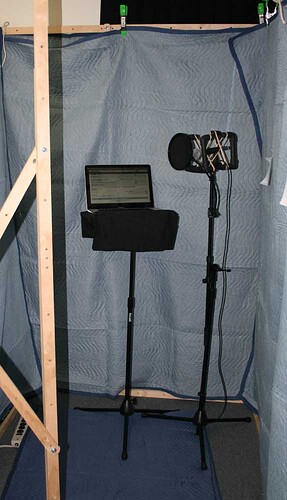I can’t take credit for the -80dB.
That clip ticked an attention point. It’s too good. -96 is the absolute minimum audio noise where all “molecular activity stops.” Nobody records down there. Given your clip was heavily processed (nobody records high RMS, either. That was another tick), somebody who knew what they were doing processed the sound. I’m impressed, by the way. They did it without any outward appearance of corrections.
I will also read through your manual ACX testing.
I prepared a correction, but I haven’t post it yet. The Peak specification is wrong. It’s not -3.0db to -3.5dB. It’s just lower than 3.0dB. That’s the overload specification. But that is how to use the tools. That’s correct.
I had to turn the fridge off to achieve that value.
And there in one swoop you have the difficulty when your recording space isn’t a studio. Two families before me had a kid that played drums, so my third bedroom is soundproofed. Even with that, I have to stop recording when a Metrobus goes by because the window isn’t sealed.
I’ll check out the Samson G-Track
The microphone was borrowed from one of the production people with the idea I was going to use it as proof of performance for Overdubbing/Sound-On-Sound in Audacity. It worked famously. The owner uses it for his music (he’s part of a band) and I noted that it wasn’t terrible. That’s as far as I got. I never recorded any voice tests or other performances and I never listened to anything he did.
So that’s my recommendation. Not terrible. It does have one possible problem. Because it’s not an expensive microphone, it’s possible it could have The Yeti Curse whiny noise in the performance on some computers. There’s no technical reason for it not to.
Better to have the fridge sound gone before I record!
Noise Reduction works by trying to remove some sounds from your performance. It always affects the valuable performance and the juggling act is how well you can hide the damage. So Noise Reduction isn’t “free” and quiet studio recording is highly desirable. Did you note in the ACX videos, it’s not a question of you having a sealed room studio, but how large and where you were going to put it?
There are other possibilities. You can make a sound tunnel and pile quilts, duvets or moving blankets around. So no permanent room, but perfectly serviceable “studio.”


People make portable tunnels, too for noisy environments where you don’t have access to lots of space. That’s the semi-round thing on the right in this recording.
Queensland Narrating Service
Perfectly delightful idea. By the time you get through that, you will have a terrific idea of your studio shortcomings and any other problems you may have. It will also get you over the First Book Curse.
Koz




